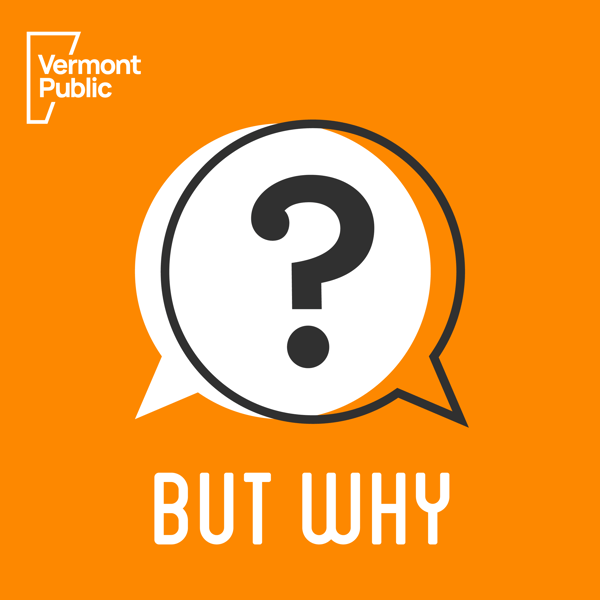Why do pigs oink?
But Why: A Podcast for Curious Kids
Vermont Public
4.4 • 4.9K Ratings
🗓️ 8 April 2022
⏱️ 33 minutes
🧾️ Download transcript
Summary
Why do pigs snort? And why do we call their snorts “oink” in English? We’re taking our exploration of animal noises in two directions today. First we’ll learn about why we use different words to describe animal noises, depending on what language we’re speaking. And then we’ll examine what animals are actually saying when they oink or tweet or moo! Our guests are linguist and author Arika Okrent and bioacoustic researcher Elodie Briefer, of the University of Copenhagen. Other questions we tackle in this episode: Do cows make different amounts of “moos” to say different words? Why do ducks make loud noises? Why do roosters cockadoodle-do in the morning? PLUS, so many kids sent us animal noises in different languages and we’ll hear them all!
Download our learning guides: PDF | Google Slide | Transcript
Bioacoustics is the study of sounds made in nature. Scientists like Elodie Briefer study how animals make sounds and what information we can find in those sounds. Scientists will record sounds and use computers to measure and analyze what they hear and use observational skills to help determine what the sounds might mean.
Animals speak in emotion, not in words. Pigs have contact calls as well as positive and negative calls. Researchers have found that pigs will make longer calls when they are unhappy. Scientists and animal welfare advocates hope to use this information to eventually develop an app that farmers can use to improve animals’ lives on farms.
With words like moo, oink and cockadoodle-do, we are giving a name to a sound. But we’re not just trying to mimic the sound. Most of us can make the sound of a pig snort but we need words like oink because we don’t want to stop using our language to make a pig snort in the middle of a conversation.
Human voices are capable of millions of sounds but a language only uses a subset of those sounds. Our animal noise words will use the sounds available in our individual languages.
Words that sound like the sound they are describing are called onomatopoeia.
An animal has to have some cultural importance for a language to create a word for its call. That’s why we don’t have words in English for the noise a camel or a sloth would make. In Turkish there is no word for a pig call because that culture doesn’t keep pigs on farms.
Transcript
Click on a timestamp to play from that location
| 0:00.0 | If you're on the hunt for the perfect holiday gift for the kids in your life this season, |
| 0:08.6 | don't forget, but why has books? |
| 0:11.0 | They're great for independent readers or for adults to read to younger kids. |
| 0:15.6 | So if you and your kids would like to know what animal can regenerate its limbs better |
| 0:20.6 | than almost any other animal in the world, or what jellyfish are actually made out of, |
| 0:26.2 | get your hands on Do Fish Breathe underwater. |
| 0:29.0 | Or book all about the ocean. |
| 0:31.2 | Maybe farm animals are more your kids' speed. |
| 0:33.5 | In that case, try our Lama's Ticklish. |
| 0:36.5 | You can find our books at your local bookstore or online, and you can learn more at butwhykids.org |
| 0:42.3 | or slash books. |
| 1:08.8 | This is But Why, a podcast for curious kids from Vermont Public Radio. |
| 1:13.1 | I'm Jane Lindtholm. |
| 1:14.8 | On this show, we take questions from kids just like you, and we find answers. |
| 1:19.5 | Sometimes you send us questions that seem really simple at first, but when we start peeling |
| 1:25.1 | them apart, we find so many different layers. |
| 1:28.5 | Here's an example. |
| 1:29.5 | My name is Jacob, and I'm four years old, and I live in Quebec, Canada. |
| 1:37.2 | My question is, why did Pig do this? |
| 1:40.3 | Bye bye, Chouy. |
| 1:42.8 | Why do pigs make that noise? |
| 1:46.2 | There are several ways we can tackle that question. |
... |
Please login to see the full transcript.
Disclaimer: The podcast and artwork embedded on this page are from Vermont Public, and are the property of its owner and not affiliated with or endorsed by Tapesearch.
Generated transcripts are the property of Vermont Public and are distributed freely under the Fair Use doctrine. Transcripts generated by Tapesearch are not guaranteed to be accurate.
Copyright © Tapesearch 2025.

